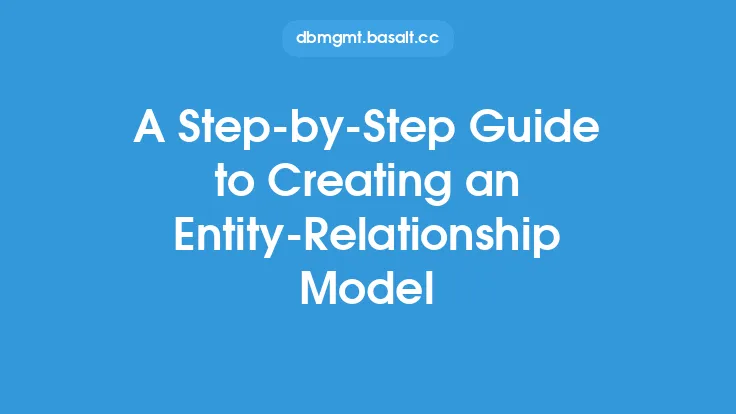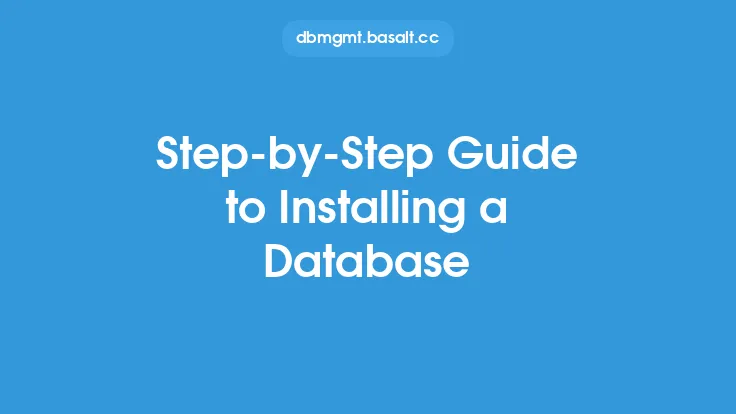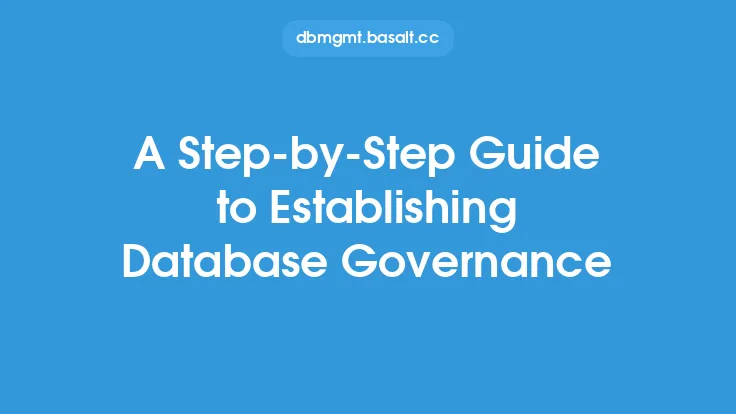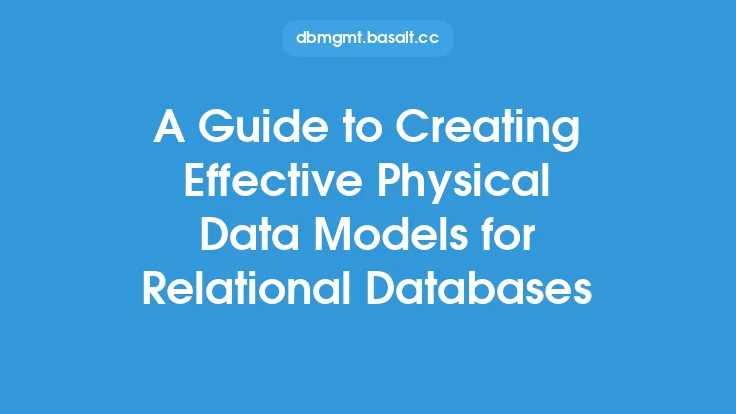Creating a logical data model is a crucial step in the data modeling process, as it helps to define the structure and organization of data in a database. A logical data model is a detailed representation of the data entities, attributes, and relationships that are relevant to a particular business or organization. In this article, we will provide a step-by-step approach to creating a logical data model, highlighting the key concepts, techniques, and best practices involved in this process.
Introduction to Logical Data Modeling
Logical data modeling is a process that involves creating a conceptual representation of the data entities, attributes, and relationships that are relevant to a particular business or organization. The goal of logical data modeling is to create a detailed and accurate representation of the data, which can be used to design and implement a database. A logical data model is typically created using a combination of entity-relationship diagrams, data flow diagrams, and data dictionaries.
Identifying Entities and Attributes
The first step in creating a logical data model is to identify the entities and attributes that are relevant to the business or organization. Entities are the objects or concepts that are being modeled, such as customers, orders, or products. Attributes are the characteristics or properties of the entities, such as customer name, order date, or product price. To identify entities and attributes, data modelers typically conduct interviews with business stakeholders, review existing documentation and systems, and analyze data sources.
Defining Entity Relationships
Once the entities and attributes have been identified, the next step is to define the relationships between them. Entity relationships are the connections between entities, such as a customer placing an order or a product being part of an order. There are several types of entity relationships, including one-to-one, one-to-many, and many-to-many. To define entity relationships, data modelers use techniques such as entity-relationship diagrams and data flow diagrams.
Normalizing the Data Model
Normalization is the process of organizing the data model to minimize data redundancy and improve data integrity. Normalization involves applying a set of rules to the data model, such as eliminating repeating groups and ensuring that each attribute depends on the entire primary key. There are several levels of normalization, including first normal form (1NF), second normal form (2NF), and third normal form (3NF). To normalize the data model, data modelers use techniques such as decomposition and attribute splitting.
Refining the Data Model
After normalizing the data model, the next step is to refine it by adding additional details and constraints. This includes defining data types, specifying default values, and establishing relationships between entities. Refining the data model also involves ensuring that the data model is consistent with the business rules and requirements of the organization.
Validating the Data Model
The final step in creating a logical data model is to validate it against the business requirements and rules of the organization. Validation involves checking the data model for accuracy, completeness, and consistency, as well as ensuring that it meets the needs of the business stakeholders. To validate the data model, data modelers use techniques such as data modeling tools, data validation rules, and stakeholder feedback.
Tools and Techniques for Logical Data Modeling
There are several tools and techniques available for logical data modeling, including data modeling software, entity-relationship diagrams, and data flow diagrams. Data modeling software, such as Entity-Relationship Diagram (ERD) tools, provides a graphical interface for creating and editing data models. Entity-relationship diagrams and data flow diagrams are used to visualize the data model and communicate it to stakeholders.
Best Practices for Logical Data Modeling
There are several best practices for logical data modeling, including using a standardized data modeling notation, following a consistent data modeling methodology, and involving business stakeholders in the data modeling process. Using a standardized data modeling notation, such as the Entity-Relationship Model (ERM), helps to ensure that the data model is consistent and accurate. Following a consistent data modeling methodology, such as the Data Modeling Lifecycle, helps to ensure that the data model is complete and well-organized. Involving business stakeholders in the data modeling process helps to ensure that the data model meets the needs of the business and is aligned with the business requirements.
Common Challenges in Logical Data Modeling
There are several common challenges in logical data modeling, including data complexity, data inconsistency, and stakeholder communication. Data complexity can make it difficult to create a logical data model that accurately represents the business requirements. Data inconsistency can make it difficult to ensure that the data model is accurate and consistent. Stakeholder communication can make it difficult to ensure that the data model meets the needs of the business stakeholders.
Conclusion
Creating a logical data model is a crucial step in the data modeling process, as it helps to define the structure and organization of data in a database. By following a step-by-step approach, using the right tools and techniques, and following best practices, data modelers can create a logical data model that accurately represents the business requirements and meets the needs of the business stakeholders. Whether you are a seasoned data modeler or just starting out, this article has provided a comprehensive overview of the logical data modeling process, highlighting the key concepts, techniques, and best practices involved in creating a logical data model.





